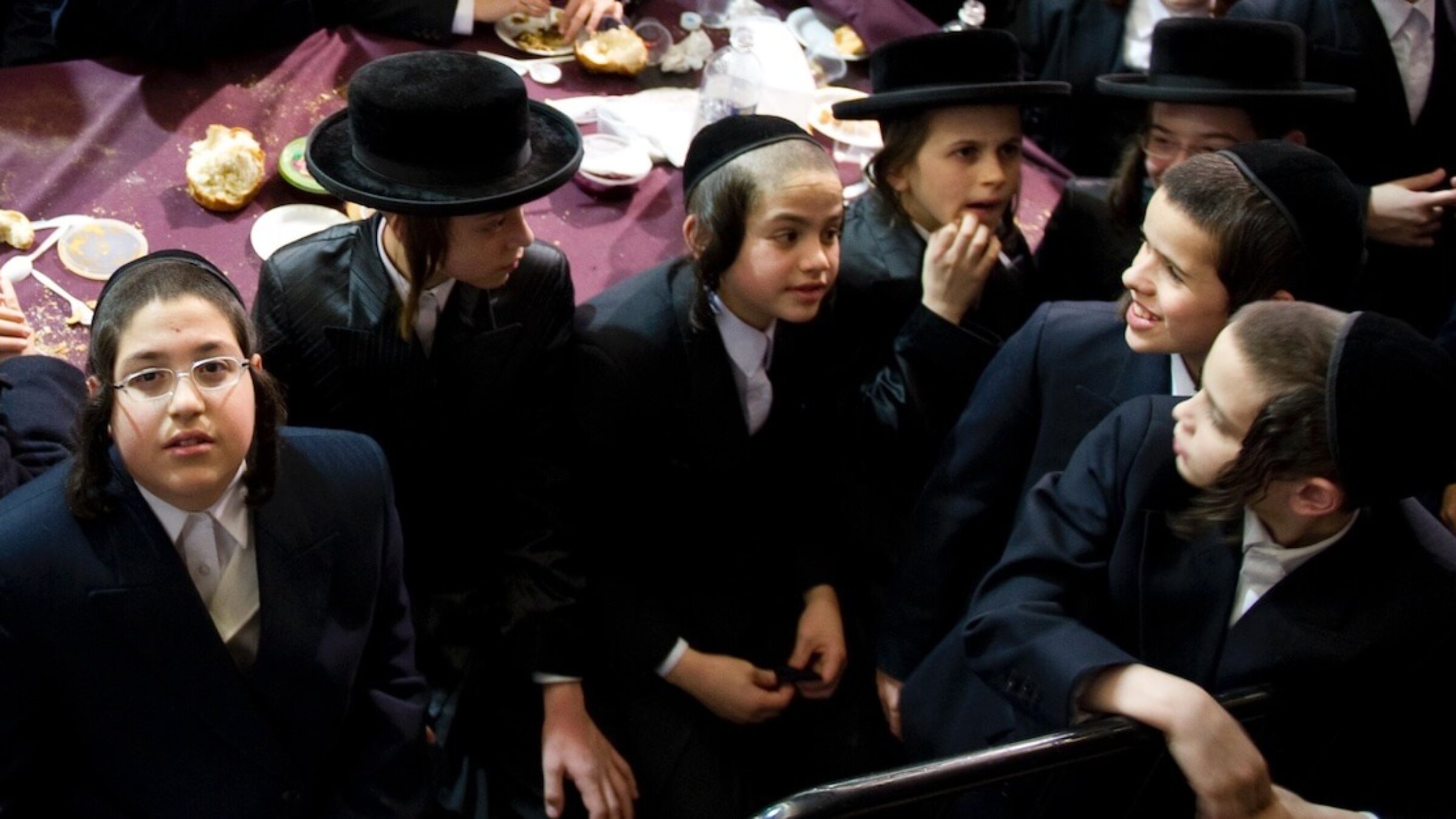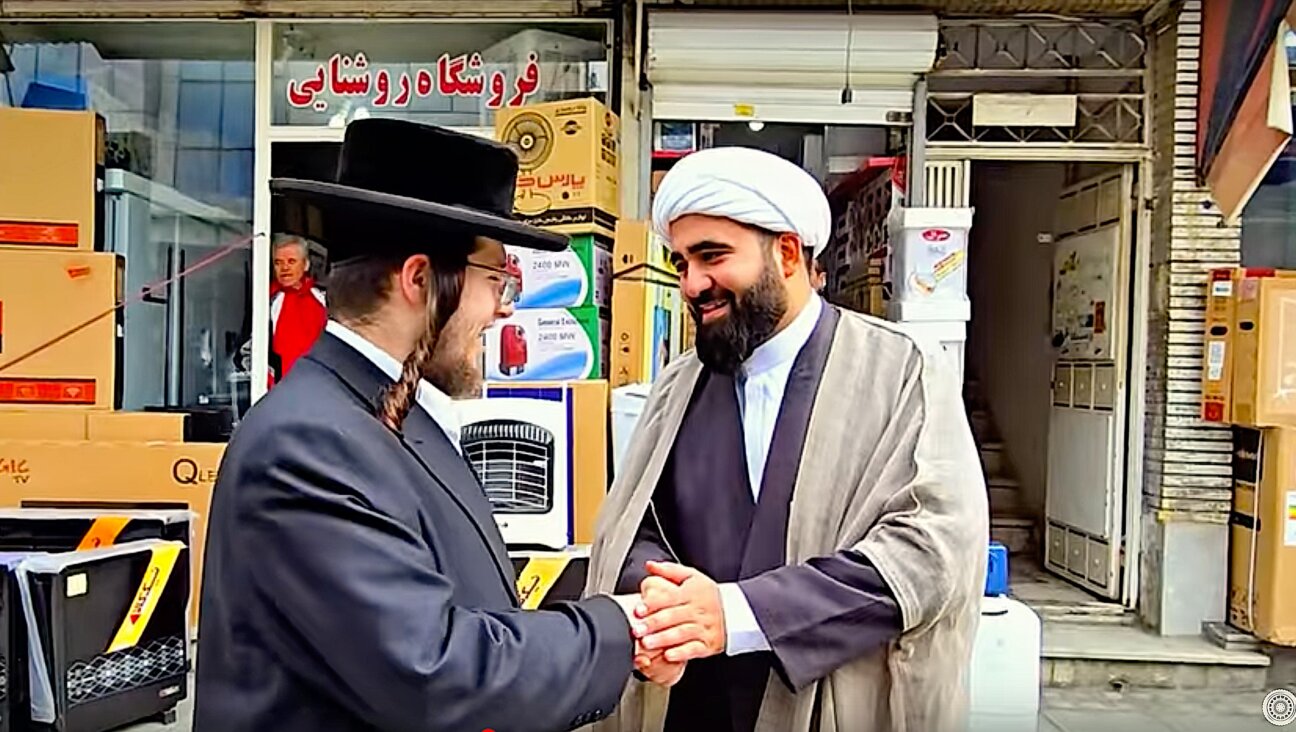Here’s what I learned counseling Hasidic special needs children
Last month the New York Times reported on Hasidic schools’ misuse of special education funding. Read what it’s like working with these kids.

Photo by Getty Images
Many years ago, after retiring from being a psychologist for children in residential treatment centers and public schools, I began working as a psychologist for intellectually and emotionally challenged Hasidic children in a program that was housed in a kheyder, a Hasidic elementary school for boys, in Williamsburg, Brooklyn.
I was told by the agency that sent me that the school administrators didn’t want any counselors for their children from outside the community, apparently concerned that they could adversely influence the faith of their most vulnerable boys. But there are very few licensed Yiddish-speaking counselors, and I was the only one available. The administrators for the special needs program in the school were said to have been told by their local Committee on Special Education that if the school didn’t accept me, it would lose other government services.
I well understood that the Hasidic community considered people like me a spiritual threat to their children. I was clearly a Jew, but I represented an alternative way of expressing my Jewishness — and they didn’t want their children exposed to it.
Working in a community that didn’t want me
So why would I choose to work in a community that didn’t want me? After a long career serving a diverse population of children, I could have retired completely. Why had I made the effort to get licensed as a Yiddish-speaking psychologist? Yiddish was the language of home for me. When I was a child, wherever my family settled after the Holocaust, nothing was really certain except our family language, Yiddish. It was our bedrock.
Ironically, my father, a Yiddish writer, sent me to an ultra-Orthodox yeshiva, although we only loosely followed traditional ways. He felt that yeshiva was where I would learn what a Jew needed to know. Not surprising, really. He had studied in yeshiva for years and remained a fervent believer in God till the end of his life. What was surprising is that he maintained his faith even after adopting a secular lifestyle, which included eating non-kosher meat and having coffee with milk after a meat meal.
My father was happy with his decision, but honestly, I didn’t fit in with the other students in the yeshiva. It wasn’t just because I wasn’t religious. Although the school administrators accepted me as a student, I was never welcomed into the insular German Jewish Washington Heights community that had founded the school. Besides, Yiddish wasn’t the language of home for my classmates. I was a Jew but, for the long years I spent there, I was always an outsider, like a yovn in suke, someone who didn’t belong in their sukkah. When I discovered in my teens that there were many young people in my own community engaged in secular Yiddish life, I immediately took to it.
Why I, a secular Jew, am so drawn to the Hasidic community
Now, as an adult in my 60s, I knew there were few secular Yiddish speakers left. My Yiddish-speaking friends, American children of Holocaust survivors, were intimately connected to the amazing cultural ferment of the Eastern Europe Yiddish world farn krig (before the war), without ever having lived in it. But so very few of my generation’s children and those of other secular Yiddish speakers can speak our mame loshn. I had an urgent yearning to hear children speaking Yiddish. So when I was ready to retire from my regular work, I decided that I wanted to work with Yiddish-speaking children, and the only ones who still spoke the language on a daily basis were those of the Hasidic communities.
But there were other reasons I was drawn to the Hasidic world. In many ways they still lived the way Jews lived in Eastern Europe before World War II, and I wanted to reclaim the Eastern Europe that had been stolen from me, that by rights should have been my heritage. There was also what might be called a spiritual component to my interest in them. As a boy in yeshiva and a camper in the Lubavitch summer camp Gan Yisroel, I had experienced fleeting moments in which I felt enfolded in the arms of God. Even though I could never bring myself to be a believer, I secretly longed to be one.
The Hasidic kids’ reaction upon meeting me
I was invited to an interview with the board of directors of the special needs program. I told them that I had religious training, and so I wouldn’t pose a threat to the children’s beliefs and way of life. The main decider in the group was a young rabbi who apparently had a background in psychology. He and I had an immediate rapport as we discussed boys’ relationships with their fathers, hinting about our personal experience with our own fathers.
The only question remaining was, would the children accept me. I was brought into a classroom with six boys and the teacher. The children seemed curious and began peppering me with questions in Yiddish and I responded. When I said something I thought was funny, they laughed.
They asked if I spoke any other languages besides Yiddish. I said I also spoke French and English. They were excited when I said I spoke English, because they thought I said “Ingrish,” which is what they called Hungarian, the language of their Eastern European forebears to which their community still had an emotional tie. When I figured out that they thought I said “Hungarian,” I told them that I didn’t speak it and they accepted that, saying that they didn’t either. But they seemed happy to talk to this outsider who spoke their language: Yiddish.
On the other hand, I was probably a novelty to them, being beardless, wearing a sedate suit, white shirt and necktie. And my knit yarmulke was a sign that I was too modern. One child was actually intrigued by it. He grabbed it off my head and traded it for his own velvet one and ran off. Everyone, including the administrators standing there, laughed. I was in.
Bringing in maps and secular books about other cultures
I started working in their summer program, ostensibly so that the school administrators could see if it would work out, i.e. that I wouldn’t influence the children’s faith in a negative way. When I saw the toys in the room where I was to work with the children, I was surprised to find lifelike dolls among them. There’s a Talmudic prohibition against dolls because of the biblical proscription against making graven images. I asked one of the rebbes (teachers) about this. He said that dolls were accepted in the general community because they were clearly not intended for idol worship. But they were especially acceptable for special needs children. I found out that in order to help these children, many dispensations were made. Including me, I guessed.
I was also surprised that the program had a model of the solar system, and that they were proud to show it to me. Making images of heavenly bodies is specifically proscribed in the khumesh, the Bible. I never found out why it was permissible to have it in the school. Maybe because the model was plastic and in no way resembled the actual heavenly bodies.
I bought a velvet yarmulke so that I would fit in more, but it really wasn’t necessary because the boys were always eager to come to me. I tried to get them to talk about their feelings, but it was challenging. They simply weren’t accustomed to talking about themselves in detail, especially about their emotions.
So I set low goals. Through the medium of playing games and toys, I tried to have them engage in give-and-take conversations with me or with another child in a “group” of two — all in Yiddish, of course.
Getting to know the teachers
The adults appreciated that I had a good rapport with the boys and treated me warmly. Some of the rabbis clearly liked that I brought the outside world in, such as when I taped maps of New York onto the wall and displayed a globe of the world, as well as books about other cultures in my office cubicle. I brought one of the rabbis the secular books in Yiddish that he asked for, especially one that documented the Czernowitz Conference of 1908 declaring Yiddish a national language of the Jewish people.
I developed a few genuine friendships among the teachers. We often discussed our different perspectives. I was struck by how little these learned men knew about secular culture. None of them knew who William Shakespeare was. They had heard of George Washington and some knew of Abraham Lincoln, but not much more of our country’s history. On the other hand, they knew the name of every major rabbi who had influenced religious Jewish thought throughout the centuries. Even the boys in this special needs program knew about these famous rabbis, as well as children in secular schools know the names of sports heroes. Many of the children even had picture cards of the rabbis.
The rabbis I worked with knew the names of only two Yiddish writers: Sholem Aleichem and Aaron Zeitlin. Yiddish was their daily language, but it was used only for practical day-to-day communication, not for developing higher-level ideas. For that they had loshn-koydesh, the Hebrew-Aramaic holy language used for religious texts.
Members of the Hasidic community welcome me into their homes
I was excited to be among the rabbis and children of the Hasidic program in which I worked. Here, in this small segment of the Haredi community, I felt welcomed. People would invite me to their homes for simkhes (celebrations) and to weddings. I was often treated like an honored guest. I was not one of them, just as I hadn’t been an insider in my yeshiva as a child, but among the Hasidim I was appreciated.
Surprisingly, what was most gratifying for me was davening (praying) the minkhe service every afternoon at 2 o’clock. I put my hat on over my yarmulke, as the others did, and joined the men and boys over 13 who had gathered for prayer in the room outside my little cubicle. Even though they did this every day, the fervor of the vocal utterances and especially the murmurings and deep silences of group prayer were profoundly moving to me. There is something powerful about joining others in supplication to a shared higher being.
I had had traces of such experiences when I was a boy in yeshiva and in Lubavitch camp. But something new astounded me and made my knees wobble. I was overwhelmed that two boys, ages 7 and 8, whom I saw for counseling, nestled close to me as I prayed. They leaned their heads against me and gently held onto my arms, literally connecting with me in my prayers, shokling (swaying) in unison with me. It was the most connected to other human beings I had ever felt during prayer. I was there to do therapy with these sweet, innocent young boys, but they were healing me.






















